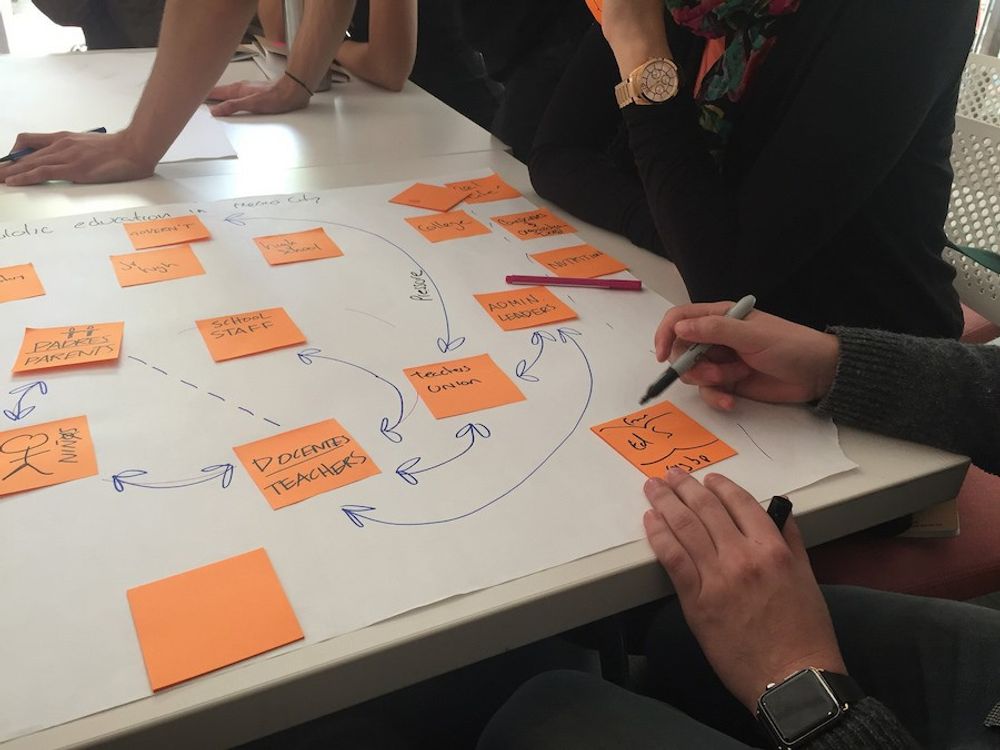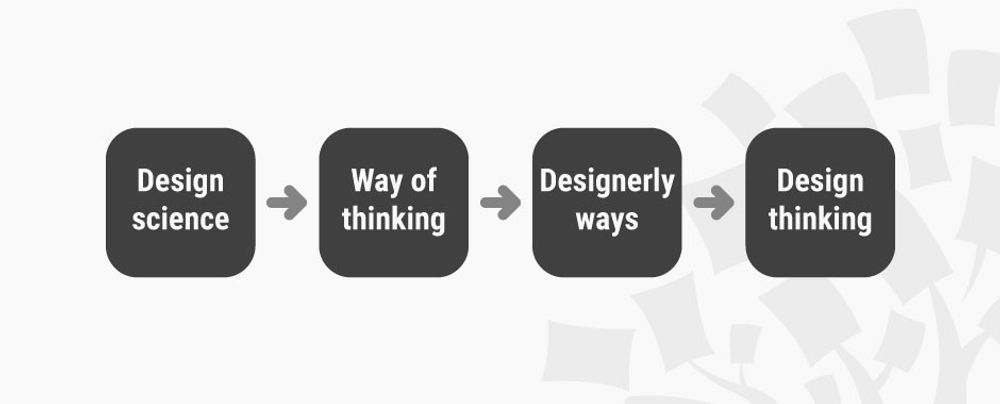What Are Wicked Problems and How Might We Solve Them?

- 1.2k shares
- 2 years ago
Wicked problems are problems with many interdependent factors making them seem impossible to solve. Because the factors are often incomplete, in flux, and difficult to define, solving wicked problems requires a deep understanding of the stakeholders involved, and an innovative approach provided by design thinking. Complex issues such as healthcare and education are examples of wicked problems.
The term “wicked problem” was first coined by Horst Rittel, design theorist and professor of design methodology at the Ulm School of Design, Germany. In the paper “Dilemmas in a General Theory of Planning,” he describes ten characteristics of wicked problems:
There is no definitive formula for a wicked problem.
Wicked problems have no stopping rule, as in there’s no way to know your solution is final.
Solutions to wicked problems are not true-or-false; they can only be good-or-bad.
There is no immediate test of a solution to a wicked problem.
Every solution to a wicked problem is a "one-shot operation"; because there is no opportunity to learn by trial-and-error, every attempt counts significantly.
Wicked problems do not have a set number of potential solutions.
Every wicked problem is essentially unique.
Every wicked problem can be considered a symptom of another problem.
There is always more than one explanation for a wicked problem because the explanations vary greatly depending on the individual perspective.
Planners/designers have no right to be wrong and must be fully responsible for their actions.
Design theorist and academic Richard Buchanan connected design thinking to wicked problems in his 1992 paper “Wicked Problems in Design Thinking.” Design thinking’s iterative process is extremely useful in tackling ill-defined or unknown problems—reframing the problem in human-centric ways, creating many ideas in brainstorming sessions, and adopting a hands-on approach in prototyping and testing.
Ready to shape the future, not just watch it happen? Join the Father of UX Design, Don Norman, in his two courses, Design for the 21st Century and Design for a Better World, and turn your care for people and the planet into design skills that elevate your impact, your confidence, and your career.
Yes, poverty is a wicked problem.
As Don Norman elucidates in this video, wicked problems refer to challenges that are hard to define and address due to their complex nature, much like complex socio-technical systems. Like the example of world peace Norman mentions, poverty possesses multifaceted roots and impacts, making solutions elusive. Tackling such issues doesn't guarantee permanent resolution. However, it's crucial to understand that even if we can't wholly eradicate problems like poverty, continuously striving for improvements and bettering lives is the way forward. While wicked problems persist, consistent advancement in addressing them represents success.
Indeed, climate change exemplifies a wicked problem. As Don Norman elucidates in this video, the complexities of climate systems, human activity, ecology, and their interconnectedness pose challenges in understanding and addressing the issue.
The non-linear nature of these systems, intertwined with feedback loops and feed-forward loops, adds to the intricacy. Moreover, people's simplistic causality models hinder recognizing multifaceted causes and delayed consequences. While many often resist change, especially those benefiting from the status quo, the palpable effects of climate change—fires, floods, famine, and extreme weather events—are now evident worldwide. Although historically, we've been reactive, responding post-calamity, the tangible repercussions of climate change have catalyzed a global response, providing a glimmer of optimism for the future.
Yes, healthcare is a wicked problem. Addressing healthcare issues often involves navigating complex, interconnected systems that require multi-faceted approaches. In Don Norman's video, he speaks about incrementalism, where tackling significant challenges is done step by step.
Incrementalism: Address healthcare challenges in small, adaptable steps, ensuring each move is in the right direction.
Minimum Viable Project (MVP): Borrowed from Agile programming, it's about creating small, functional segments of the larger solution. This method ensures that each part, even if small, is working effectively.
Object-Oriented Approach: Here, the focus is on the inputs and outputs of a system, not the internal process. This modular design allows for flexibility and adaptation as healthcare needs and methods evolve.
According to HCI expert Alan Dix, understanding the difference between puzzles and real-world problems is crucial. Puzzles have a single correct solution with all the necessary information provided. However, wicked problems inherent to real-world scenarios are not as clearly defined as puzzles. They may not have a definite answer and may even be insoluble in their initial form. The primary step is deeply understanding the problem, as solutions may become evident once fully grasped. Indeed, there's a saying, "If I had an hour to solve a problem, I'd spend 55 minutes thinking about the problem and 5 minutes thinking about solutions." Thus, investing time in understanding, redefining, and negotiating the problem can pave the way to practical solutions. In the realm of wicked problems, creative thinking and individualized approaches are paramount.
In design thinking, wicked problems refer to complex challenges that lack clear solutions or boundaries. Unlike puzzles, which have a definitive answer, wicked problems are unique, possess no classic formulation, and their potential solutions are non-enumerable. The complexity arises from the interconnectedness of factors and the inability to use a prior solution for a new problem. These problems often require creative, individualized approaches and deep understanding for effective resolution. As detailed in this article on the history of Design Thinking on interaction-design.org, design thinking as a methodology emphasizes empathy, iteration, and collaboration, making it aptly suited to address wicked problems by redefining and understanding them from various perspectives.
Climate Change: Addressing the causes and impacts of global warming involves balancing the needs of various nations, industries, and populations. Solutions can have unintended consequences, and only some answers satisfy all stakeholders.
Healthcare: Ensuring affordable, high-quality healthcare for all is a complex issue with economics, politics, and individual health needs.
Poverty and Economic Inequality: Addressing the root causes and alleviating the effects of poverty require multifaceted solutions involving education, job creation, health services, and more.
Urban Planning and Housing: Balancing the needs for housing, transportation, green spaces, and commercial areas in rapidly growing urban areas is a constantly evolving challenge.
Global Terrorism: Addressing the root causes and responding to the effects of terrorism involves considerations of international relations, religion, socio-economic factors, and security concerns.
Water Scarcity: Ensuring adequate, clean water for all involves a mix of technological, environmental, political, and social solutions.
Food Security: Ensuring everyone has access to sufficient, safe, and nutritious food involves considerations of agriculture, trade policies, climate change, and socio-economic disparities.
Immigration and Refugees: Managing migration and addressing the needs of refugees requires balancing national security, economic interests, humanitarian concerns, and social integration.
Education Reform: Ensuring quality education for all, adapting to technological changes, and preparing students for a rapidly changing world is a multifaceted challenge.
Biodiversity Loss: Protecting endangered species and habitats in the face of urban development, climate change, and other pressures is a complex, ongoing struggle.
These are just a few examples, and many other problems could qualify as "wicked" given the proper context and scale. The hallmark of wicked problems is that they can't be solved with linear, traditional problem-solving methods and require a more holistic, adaptive, and iterative approach.
Wicked problem in leadership refers to challenges that leaders face, which are complex, multifaceted, and often resist straightforward solutions. These problems often arise from various factors, including human behavior, organizational dynamics, external pressures, and evolving circumstances. Addressing such issues requires a leader to navigate ambiguity, adapt to changing contexts, and collaborate with diverse stakeholders. Here are some examples of wicked problems specific to leadership:
Organizational Culture Change: Changing the ingrained culture of an organization is a long-term process filled with resistance, unexpected challenges, and the need for continuous adaptation. A leader might have a vision for a more innovative or inclusive culture, but translating that vision into tangible changes in behavior, systems, and practices is a wicked problem.
Digital Transformation: In an era of rapid technological change, leaders face the wicked problem of ensuring their organizations adapt and innovate while maintaining core functions and managing potential disruptions.
Ethical Dilemmas: Leaders sometimes face decisions without clear, correct answers, and various ethical principles might conflict. These dilemmas involve privacy, data security, team member rights, or corporate social responsibility.
Stakeholder Management: Leaders in complex organizations must manage a web of stakeholders, each with distinct interests, priorities, and expectations. Balancing the needs of employees, shareholders, customers, regulators, and the broader community is a constant challenge.
Crisis Management: Responding to unforeseen crises, be they financial, reputational, or operational, requires leaders to make quick decisions with limited information, all while managing internal and external perceptions.
Wicked problems are complex challenges that defy straightforward solutions. While they are inherently complex and can be perceived as 'bad' due to their complexity and often represent negative scenarios, they also present opportunities for innovation and deep understanding. Addressing wicked problems often requires a blend of systems thinking and agile approaches. This article on Interaction Design Foundation delves into a 5-step method to tackle wicked problems, combining systems thinking with agile methodology. Therefore, while wicked problems are challenging, they can lead to significant growth and insights when approached effectively.
Want to explore wicked problems further? Dive into our 21st Century Design course to uncover modern design challenges and solutions. For a deep dive into design's impact on global issues, explore Design for a Better World. Both courses empower you with tools to navigate wicked problems in design.
Remember, the more you learn about design, the more you make yourself valuable.
Improve your UX / UI Design skills and grow your career! Join IxDF now!
You earned your gift with a perfect score! Let us send it to you.
We've emailed your gift to name@email.com.
Improve your UX / UI Design skills and grow your career! Join IxDF now!
Here's the entire UX literature on Wicked Problems by the Interaction Design Foundation, collated in one place:
Take a deep dive into Wicked Problems with our course Design Thinking: The Ultimate Guide .
Master complex skills effortlessly with proven best practices and toolkits directly from the world's top design experts. Meet your experts for this course:
Don Norman: Father of User Experience (UX) Design, author of the legendary book “The Design of Everyday Things,” and co-founder of the Nielsen Norman Group.
Alan Dix: Author of the bestselling book “Human-Computer Interaction” and Director of the Computational Foundry at Swansea University.
Mike Rohde: Experience and Interface Designer, author of the bestselling “The Sketchnote Handbook.”


We believe in Open Access and the democratization of knowledge. Unfortunately, world-class educational materials such as this page are normally hidden behind paywalls or in expensive textbooks.
If you want this to change, , link to us, or join us to help us democratize design knowledge!
